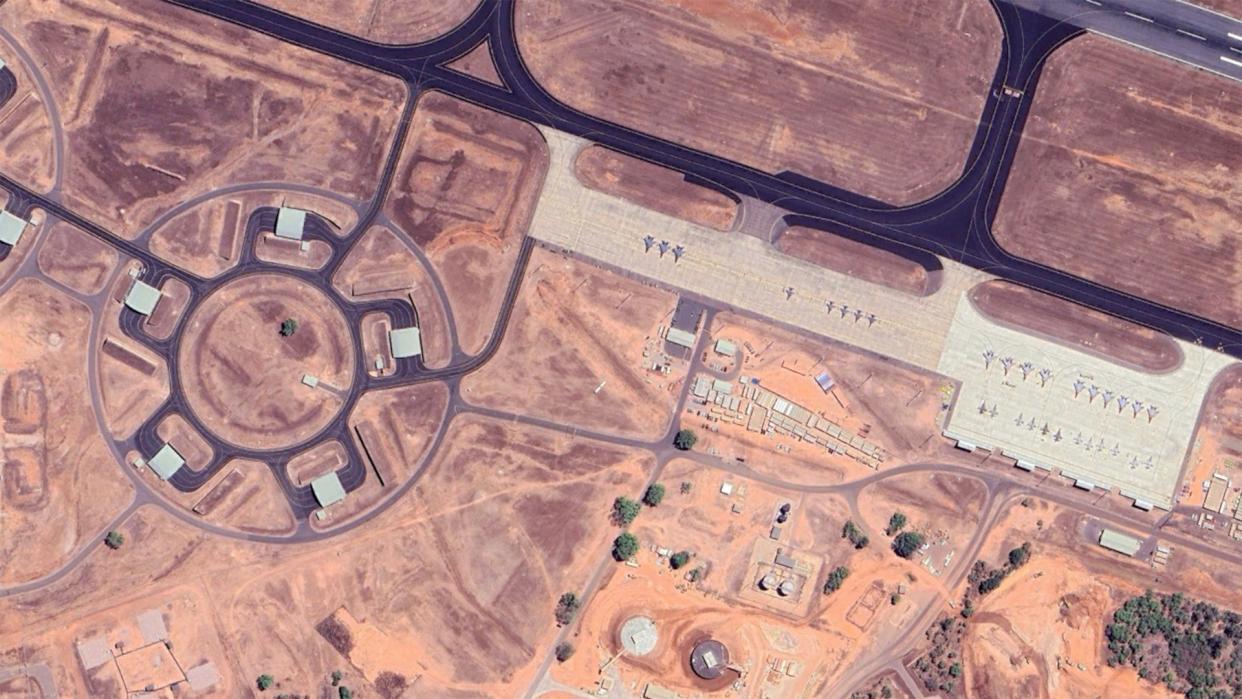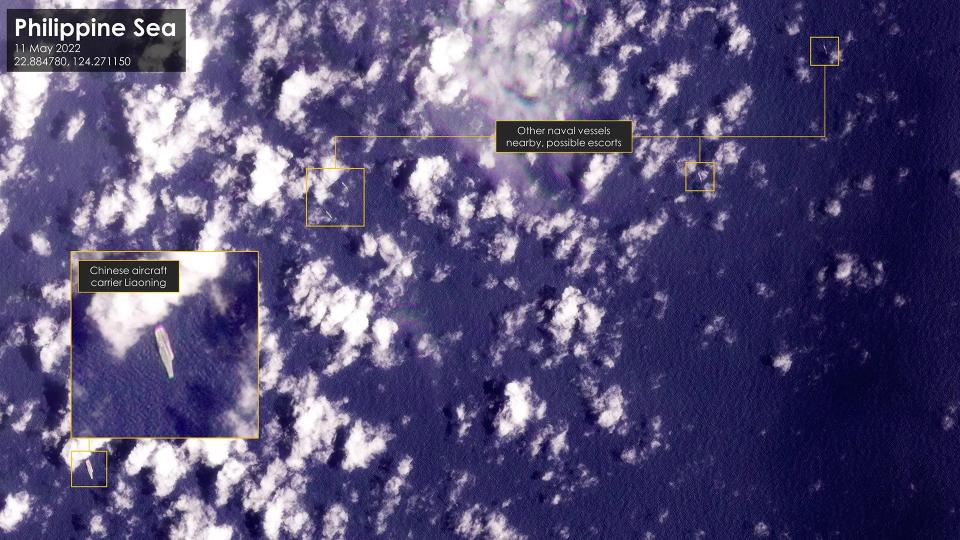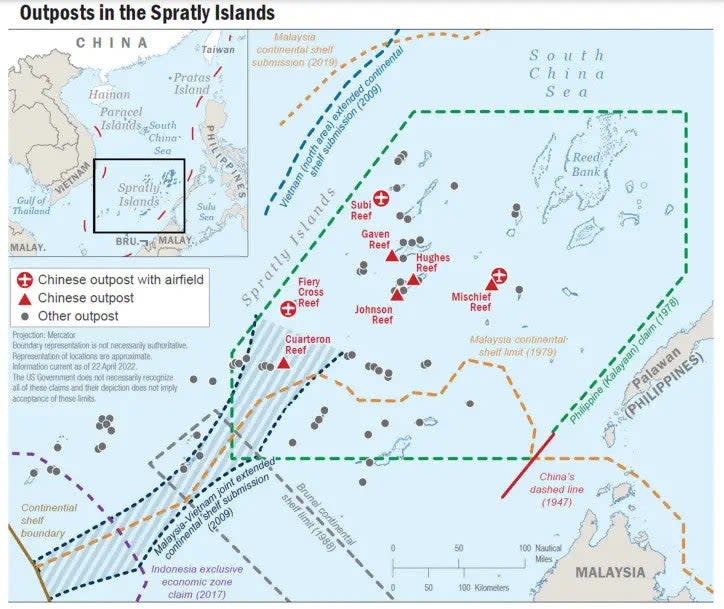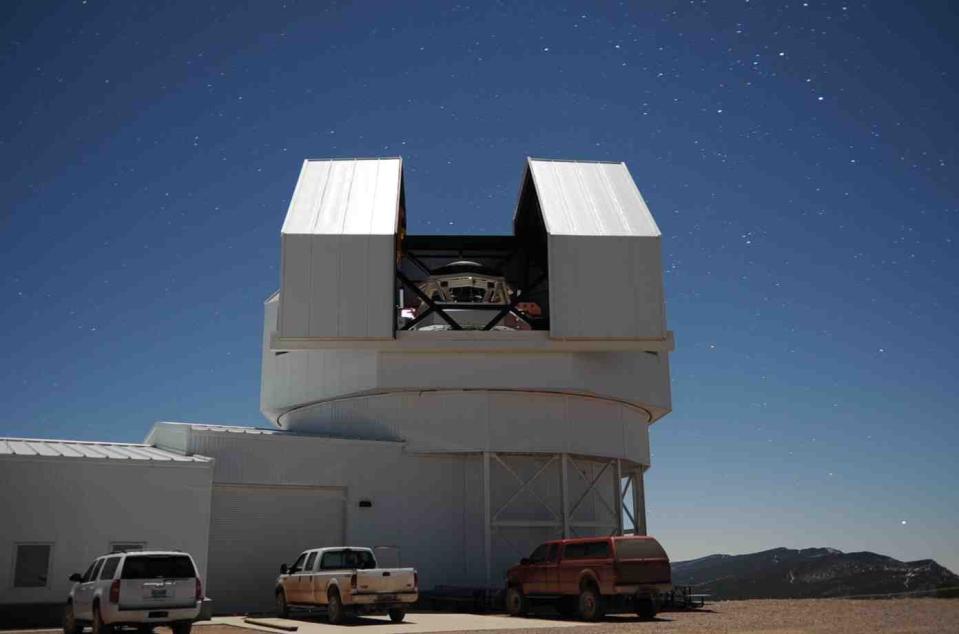China's Constant Spying On Australian Drills From Space A Sign Of Shifting Orbital Balance

An Australian defense contractor that provides commercial satellite tracking services says it has monitored hundreds of Chinese space-based surveillance assets making thousands of passes over the country and surrounding areas in recent months. The company's data indicates that the Chinese satellites have been gathering intelligence about major multi-national military exercises hosted by Australia.
Really, this should not come as a surprise and underscores the fact that the United States, and by extension very close allies like Australia, no longer enjoys an extreme degree of dominance when it comes to space-based surveillance, intelligence, and reconnaissance (ISR) capabilities it once did.
Australia's ABC News was the first to report on the space-tracking data that Canberra-based EOS' Space Systems division says it has collected about Chinese satellites appearing to monitor the 2023 iterations of the Talisman Sabre exercise last month, which had air, land, and sea components, as well as the recently concluded maritime-centric Malabar exercise. Both of these are major international training events that the United States and other countries participate in. This year's Talisman Sabre was the largest to date.
https://www.youtube.com/watch?v=AGbG3ymqlxk
"We've been collecting optical surveillance data on Earth observing Chinese satellites during the Talisman Sabre and Malabar exercises and what that's showing is quite a lot of activity surveying the ground during those events," EOS Space Systems' James Bennett told ABC News.
"We've seen over 300 satellites surveying ground-based activities and the number of overflights is over 3,000 since the start of the Malabar exercise centered around the Sydney Harbor bay area," he added.
https://www.youtube.com/watch?v=U2a-_tPp-S8
In addition, "in July... EOS Space Systems tracked three Chinese geostationary orbit satellites maneuvering into position below the equator to monitor the Talisman Sabre war games across northern Australia," according to ABC News.
This data definitely points to major Chinese interest in what has been happening at these exercises. That, of course, makes good sense as both training events typically showcase higher-end capabilities that Australia, the United States, and their allies and partners possess.
More importantly, the Chinese government has the means to conduct satellite surveillance on this scale now. This is a direct result of years-long efforts on the part of authorities in that country to try to attain a level of space-based capabilities previously only enjoyed by the United States.
"At the end of 2021, China's ISR satellite fleet contained more than 260 systems – a quantity second only to the United States, and nearly doubling China's in-orbit systems since 2018," according to the 2022 edition of the Pentagon's annual unclassified report on China's military and security capabilities, which was released last November. "The PLA owns and operates about half of the world's [space-based] ISR systems."
There are some questions about the exact counting of Chinese-spaced ISR assets from that report. Another unclassified report that the U.S. Air Force's National Air and Space Intelligence Center (NASIC) published in 2018 said that China had 122 ISR satellites, while the United States had 353, Russia had 23, and the rest of the world combined had 168. Even if all of those other figures had stayed the same, 260 Chinese systems in 2021 would not equate to half of the global total.

The 2018 NASIC report also explicitly says that its totals do "not include countries or multinational organizations without indigenous satellites that use space services secured via commercial agreements, governmental partnerships, or non-traditional means." The U.S. government makes heavy use of satellite imagery from commercial providers to supplement its own organic capabilities. The Chinese government is increasingly doing the same.
"There are a number of civil and commercial applications for remote sensing data, such as environmental monitoring, urban planning, and disaster response. High demand for this data and falling costs for capable technology have spurred the rapid growth and proliferation of these satellites," NASIC's 2018 report notes. "A decade ago, foreign remote sensing satellites numbered nearly 100 – by mid-2018, that number reached over 300."
"U.S. commercial satellite imagery companies are bound by a variety of regulatory mechanisms. Foreign commercial imagery companies, some of which are wholly or partially state-owned, are under different regulations," that same report added. "Some foreign satellite imagery companies may sell images or information about U.S. or allied national security interests to hostile non-state actors or foreign powers."
Any discrepancies in accounting notwithstanding, it is clear that the Chinese government has amassed a huge number of ISR satellites and is now the second-largest national operator of such systems behind the United States. On top of that, by all indications, China's total ISR satellite fleet absolutely dwarfs those belonging to all other countries on Earth, with the exception of the United States. That Russia only had a paltry 23 space-based ISR assets in 2018 underscores the massive advantages the U.S. government had enjoyed in this regard for decades even over near-peer competitors.
"Recent improvements to China's space-based ISR capabilities emphasize the development, procurement, and use of increasingly capable satellites with digital camera technology as well as space-based radar for all-weather, 24-hour coverage. These improvements increase China's monitoring capabilities – including observation of U.S. aircraft carriers, expeditionary strike groups, and deployed air wings," the Pentagon's 2022 China report added. "Space capabilities will enhance potential PLA military operations farther from the Chinese coast. These capabilities are being augmented with electronic reconnaissance satellites that monitor radar and radio transmissions."

Furthermore, Chinese ISR satellites "could support monitoring, tracking, and targeting of U.S. and allied forces worldwide, especially throughout the Indo-Pacific region," the Pentagon's annual review had noted. "These satellites also allow the PLA [People's Liberation Army] to monitor potential regional flashpoints, including the Korean Peninsula, Taiwan, [the] Indian Ocean, and the South China Sea."
It's important to point out here that a host of threats, especially China's growing arsenal of cruise, ballistic, and now hypersonic missiles, has already prompted the U.S. military to focus on new concepts of operations centered heavily on distributed basing and rapid deployment and redeployment of forces to reduce vulnerability to these systems. The more remote sensing capabilities a force like the PLA has at its disposal will lessen the effectiveness of those operating concepts, especially if they cannot be effectively denied or mitigated during a conflict. With more surveillance coverage available, including fast revisits to key areas, targeting cycles can be condensed and the windows of vulnerability to assets on the surface tighten.
This is all entirely in line with what EOS Space Systems has now told ABC News that it has been observing with regard to China's space-based monitoring of Talisman Sabre and Malabar.
The potential impacts of the Chinese government's now-expansive satellite ISR capacity go well beyond just surveilling exercises. As the Pentagon's 2022 China report highlighted, these satellites enable the PLA to conduct extremely valuable space-based intelligence gathering and more general surveillance of various potential hotspots in the Pacific, including military activities in and around Taiwan and in the heavily disputed South China Sea, on a more persistent basis.

The intelligence and general situational awareness that Chinese ISR satellites provide could contribute to the targeting of enemy forces, including high-value assets like American aircraft carrier strike groups, during an actual major conflict. This could be an important addition to the PLA's already expansive anti-access and area denial capabilities in places like the South China Sea.
The PLA's expansive array of space-based ISR could of course be used to support current and future operations that have to do with much more than China's territorial claims, something last year's Pentagon China report also highlighted. The Chinese government's clear focus on expanding these capabilities is well in line with other efforts, including an expanding number of overseas bases, that are clearly intended to help the PLA move beyond being a regional military powerhouse to a global one.
https://twitter.com/VVSNair/status/971039452633227264
It is of course worth noting that many countries, including the United States and Australia, have significant numbers of ground and space-based assets dedicated to tracking enemy satellites and other potential threats in space, in part to help mitigate the impacts of any snooping.
"The ADF [Australian Defense Forces] takes prudent measures to safeguard the information security of Australian and participating forces," a spokesperson for the Australian Department of Defense told ABC News in response to questions about EOS' data. "Defense tracks satellite movements as part of broader space domain awareness efforts."
A spokesperson for the Australian DoD declined, not surprisingly, to elaborate on what those "prudent measures" entail.
That being said, China's space-based ISR capabilities, which only look set to continue to grow in scope and scale for the foreseeable future, are clearly worrisome on an entirely new level given their sheer magnitude. This can only prompt questions about whether existing "space domain awareness" capabilities that countries like the United States and Australia possess are truly sufficient to meet the challenges that Chinese satellites already present.

If China were to pursue large distributed constellations, like SpaceX's Starlink and the ones the U.S. military is working on now including to support missile defense, it could make countering its growing capabilities in orbit even more difficult. Publicly available PLA-tied research has already highlighted the potential threats that distributed networks of space-based assets could present to Chinese forces.
With that in mind, even as China's own satellite capabilities have expanded, the PLA has continued with the development of a number of anti-satellite weapons. Other countries around the world, most notably Russia, are still investing significantly in various counter-space capabilities, in no small part to make up for their shortfalls in space-based assets. As the Chinese government's satellite fleets grow, so will its need to protect them.
All told, as has been made clear by ABC News' recent report, the era of the United States and its major allies enjoying unmatched abilities to monitor their opponents from space is coming to an end.
Contact the author: joe@thedrive.com

